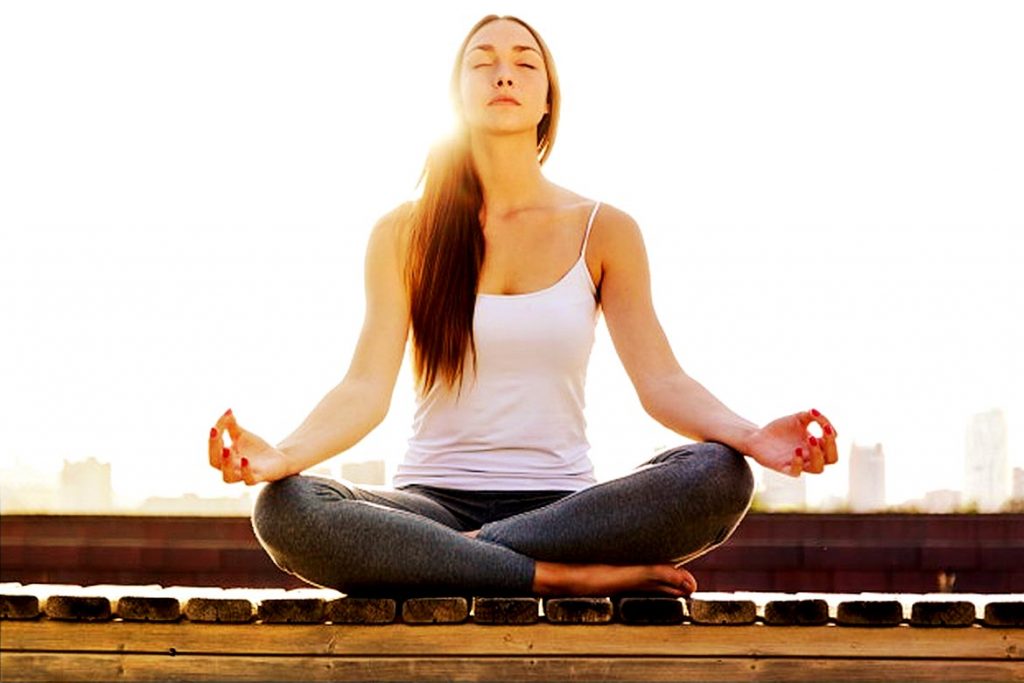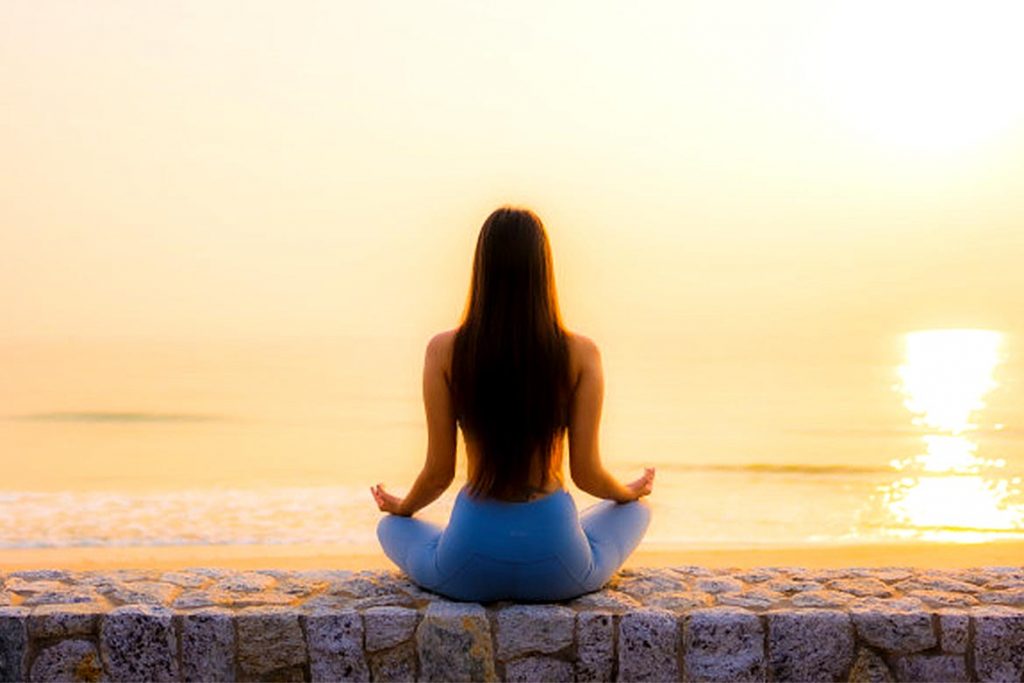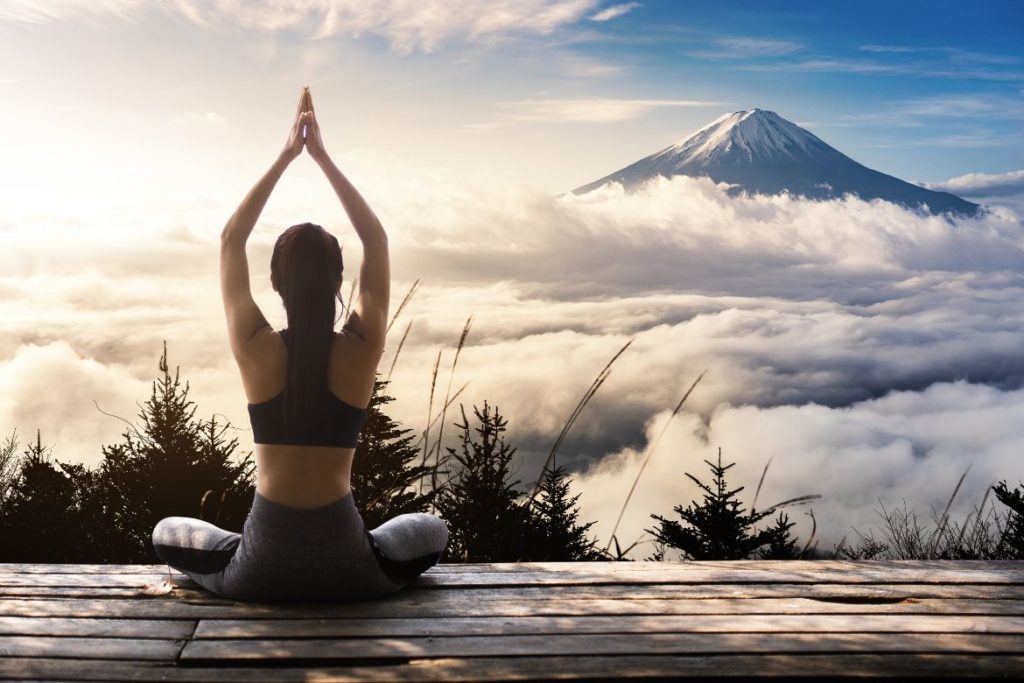Overview
Meditation helps the mind to focus uninterruptedly on a subject for a certain period. Every spiritual practice, ceremony, and prayer reach their consummation in meditation. Meditation is the last step before the final goal i.e. Samadhi, or super conscious experience. Aadiguru Sankaracharya has described meditation as maintaining constant awareness within soul, the focus of the all-pervading Self.
Also Read:-What is the difference between Mindfulness meditation and Transcendental Meditation?
One can experience the physical, mental, and spiritual benefits of meditation. Physical benefits include good voice, improved health, and complexion. Mental benefits include emotional stability, clear vision, a sense of peace, freedom from worry, stress, anxiety, and enhanced concentration. On a spiritual level, it helps the seeker to attain faith, inner bliss, self-surrender to the divine and spiritual enthusiasm.

When/ where to meditate?
An ideal time to Meditate is in the morning between 4 a.m. to 7 a.m.
White or light yellow/ purple colored, loose fitting gown or Pyjama suit is an appropriate outfit for meditation.
A room with no electromagnetic gadgets is an appropriate spot to meditate.
An ideal direction to face while meditating is the East or North-East.
An ideal posture of meditation is Padam-Asana, Sukha-Asana and Shava-Asana.
Ideal method of meditation is by focusing on the sound of “OM” with your consciousness.
- Simple techniques of meditation
It is difficult to sit for long hours and think of nothing or have an empty mind. The practical way to start practicing meditation is by concentrating on the breath. It is one of the most common approaches to meditation.

- Focus Meditation
The process involves concentrating on a single object such as breath, a single word or mantra, a candle flame, sound or mala beads. Focusing the mind is the biggest challenge. Hence, try meditating for only a few minutes. Gradually, you can meditate for longer durations. You need to refocus your awareness on the object of attention each time your mind starts wandering. Rather than pursuing random thoughts, you let them go. This process improves your ability to concentrate.
Also Read:-Benefits of exercise, healthy diet and meditation
- Mindfulness Meditation
It helps to notice wandering thoughts as they drift through your mind. Do not get indulged with the thoughts. Do not judge the thoughts but be aware as it arises. Through mindfulness meditation, you can experience the movement of your thoughts and feelings. Over the time, you will become aware of the human tendency to judge an experience as pleasant or unpleasant. The inner balance can be developed with practice.
- Breathing Meditations
Meditation and breathing exercises make the mind sharper. There is a link between breath-focused meditation, attention as well as brain health. A breath-focused meditation has several cognitive advantages. This includes an increased ability to focus, less of a wandering mind, improved arousal levels, positive emotions, and less emotional reactivity. The mindfulness of breathing practice uses the breath as an object of focus. It’s a technique that anyone can do. Breathing practices allow you to focus on the moment and the breath because each moment you spend focusing on positive is one less moment you spend focusing on negative. Many people breath shallower during stressful situations. Learning deep breathing deeply can help you feel peaceful and calm. It also helps to shift your focus when you are anxious.
The 4-7-8 breathing technique acts like body’s natural tranquilizer. Empty your lungs. Breathe in through nose for 4 seconds. Hold breath for 7 seconds. Exhale through mouth for 8 seconds. Repeat this breathing cycle up to 3 times. This technique is rejuvenating for the nervous system. It can completely shift your focus and your state of mind.
- Walking meditation
Also known as Kinhin, walking meditation is a part of Zen Buddhism. It is a practice in which practitioners walk around the room while holding their hands in Shashu i.e. one hand closed in a fist behind the back and the other hand closed within the fist. During the walking meditation, steps are taken after every breath. There are many modern variations of walking meditation which can be very rewarding and relaxing. Around 5 or 10-minute walk can be very refreshing and exhilarating as well. Whenever you feel stressed, practice walking meditation and pay attention to physical sensations such as the sound of feet touching the pavement or the feel of the air on your skin. The idea behind a walking meditation is to walk in silence as you observe everything around you. Notice the leaves and trees if you are outside, feel the warmth of the sun or pay attention to the sound your feet make as they hit the pavement. For people who have trouble sitting still for a regular meditation practice, walking meditation can be healing.
Also Read:-Reduce Acne With The Help Of Carrot Creamy Soup!
- Progressive Muscle Relaxation Meditation
Progressive Muscle Relaxation is a classic type of meditation which involves the tightening and loosening of various muscles of the body. You could do a progressive muscle relaxation by squeezing and releasing the muscles of the body, either starting at the top of the head or the bottoms of the feet. This meditation is soothing and relaxing especially before bedtime. It’s a simple meditation process that can be practiced by children.
- Mantra Meditation
It involves the repetition of a word or phrase for concentration or clarity. You can even use a simple word like peace. The mantra can be chanted aloud or silently. Chanting is an ancient practice that has been used for millennia. Mantras are sounds or symbols that correlate to a spiritual force or a deity. There are many types of mantras but a few common mantras are Ohm and Aham Prema, which means divine love. A mantra is repeated for a cycle of 40 days. It’s certainly not necessary for a beginner. To practice mantra meditation, sit quietly to ground and center yourself as you repeat the mantra 108 times. You can also count prayer bead or a mala.
- Body scan meditation
When combined with some deep breathing, it can be healing and restorative. You can quick practice it by breathing deeply and feeling a warm, soothing light on your body. As you feel the light, you can scan your body and release mental strain or tension if any.
- Shower meditation
Meditate in the shower by immersing yourself in the experience. For example, you can notice the lovely aroma of the soap, enjoy the sensation of the warm water, cold water or imagine your stress and tension draining away.
- Mindful eating
It is a practice where you eat mindfully and put everything else aside. You can focus on the texture of the food, taste or take the time to immerse yourself in the process of eating as a beautiful experience.

- Chore meditation
Try to meditate and reflect while doing chores like washing the dishes. Anything performed with a single point of focus can be considered a meditation. Washing dishes can be a soothing experience if you enjoy the process and the feel of the warm water.
Also Read:-Nendran Banana (Kerala Banana) Halwa – Healthy Weight Gain For Kids
Engaging in daily meditation practice is an excellent way to curb anxiety and stress. Many simple and quick techniques are available for those who have difficulty sitting still. Taking a mindful walk, a lovely shower meditation or focusing on a beautiful object can be a very healing and restorative practice. It doesn’t take much time to sit down and meditate. The health benefits alone are worth the extra effort.
